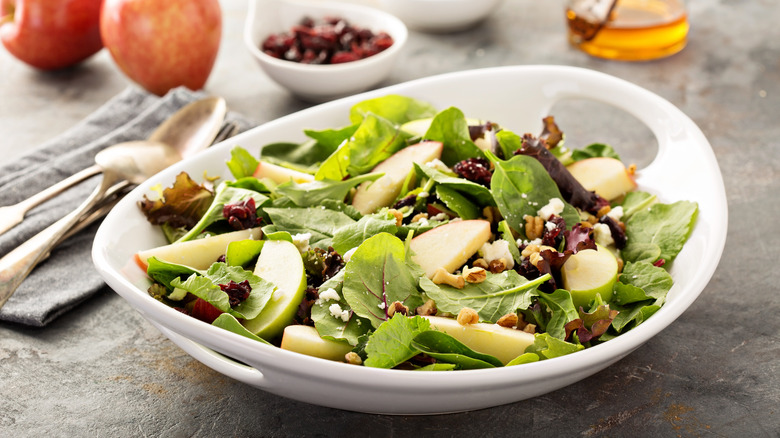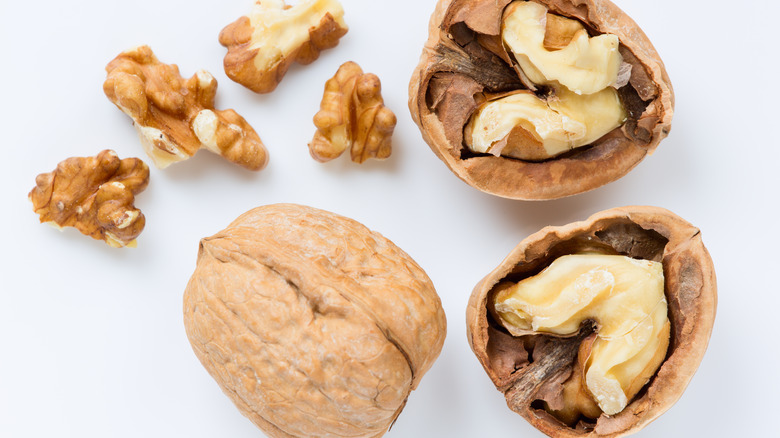The Inventor Of The Iconic Waldorf Salad Wasn't Even A Chef
It's natural to believe a renowned chef created a dish as everlasting as the iconic Waldorf salad, but you'd be wrong. That's what David Garcelon, former executive director of food and beverage at New York's storied Waldorf-Astoria Hotel thought, too. Then he dug a little deeper.
Turns out the hotel's first maître d', Oscar Tschirky, tossed together the original version of the Waldorf salad — so indelibly linked to walnuts in the collective psyche — and it had only three ingredients: apples, celery, and mayonnaise. No walnuts (via Food52). That was in 1893, when the hotel hosted its first-ever social event, a 1,500-person charity ball to benefit a local children's hospital, according to Food Network.
While stories abound about the who-when-and-where origins of the Waldorf salad, including some references to a collaboration between Tschirky and the hotel's original executive chef, Edouard Beauchamp, the generally accepted provenance points to Tschirky as the genius behind the simplicity of the salad that was part of Beauchamp's event menu. Published in 1896, "The Cook Book, by Oscar of the Waldorf," featuring the original recipe, lends credence to that theory. It makes sense because, according to Food 52, Oscar was a bit of a local celebrity. Long before celebrity chefs stamped their monikers on restaurants far and wide, the maître d' was the face of the hotel, schmoozing with guests and diners about the finer things in life, including food and wine. A Swiss expat, Tschirky was made for the job.
What's with the walnuts?
But what about those walnuts? According to Food52, Tschirky's original recipe was walnut-free. Well, that's a story in its own right and, perhaps, a testament to the staying power of Tschirky's simple recipe. When Garcelon arrived on the scene in 2011 (via LinkedIn), he discovered every single one of the hotel's in-house restaurants was serving its own version of its namesake salad.
It appears walnuts entered the mix in the early 20th century, showing up in an interpretation by French chef Georges Auguste Escoffier. Published in 1928, George Rector's book, "The Rector Cook Book," also featured a Waldorf salad with walnuts, along with bitter greens and a sprinkle of paprika. "American Food," a culinary journey by Evans Jones published in 1975, showcases one of the first recipes calling for mayonnaise, and the classic "American Century Cookbook" reveals add-ins like gelatin and cider vinegar.
After extensive research about its origins, Garcelon developed a standardized 21st century twist on Tschirky's classic Waldorf salad comprised of julienned green and red apples, candied walnuts, truffle oil, celery root brunoise, vinaigrette, and microgreens.
The Waldorf Astoria Hotel is currently closed for a multi-year $1 billion renovation. When it reopens in 2023, it's a good bet the iconic Waldorf salad will be back where it all started.

